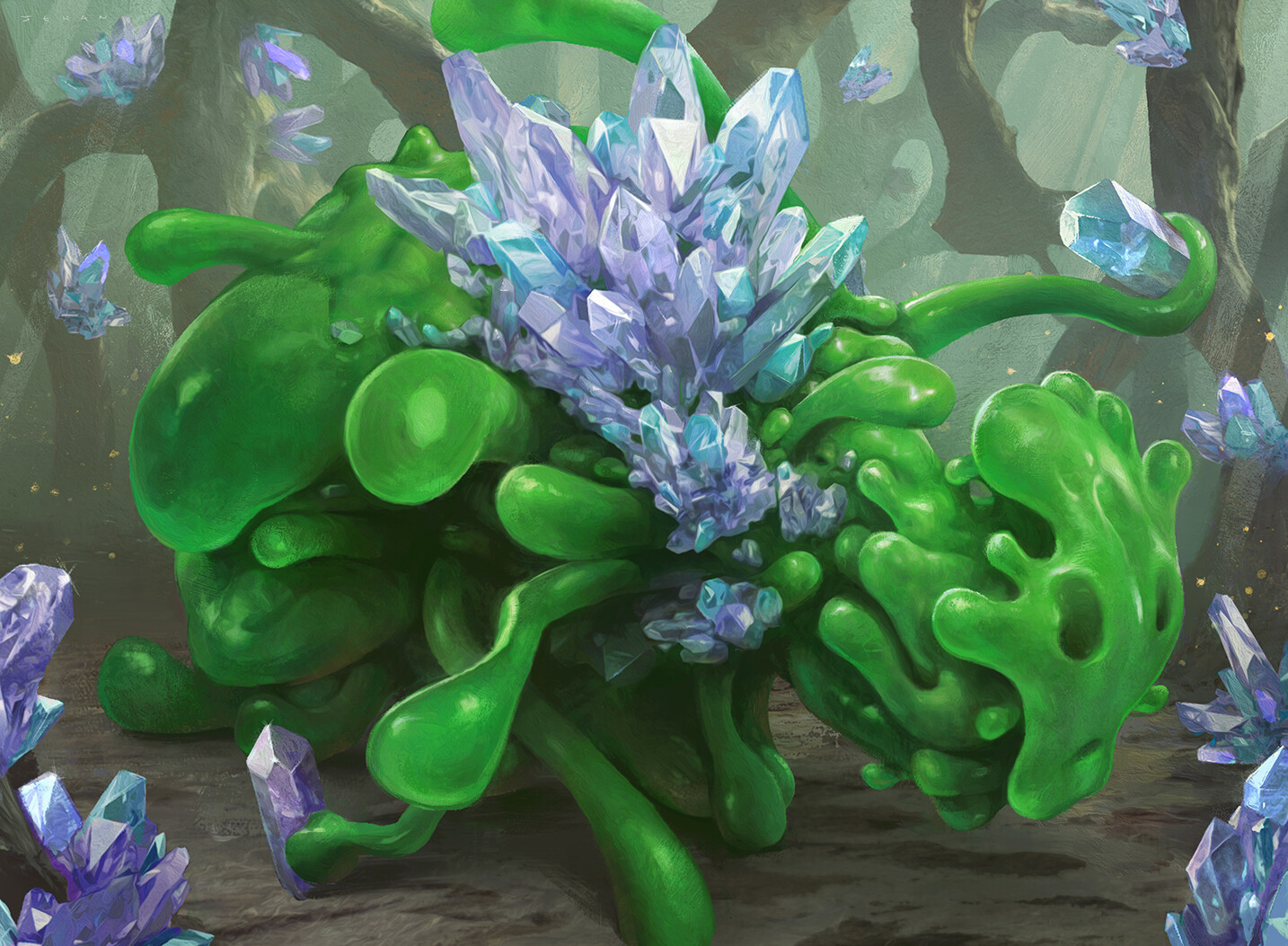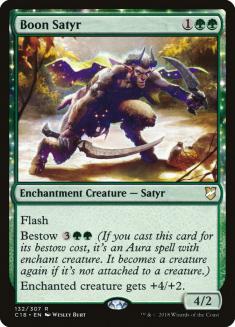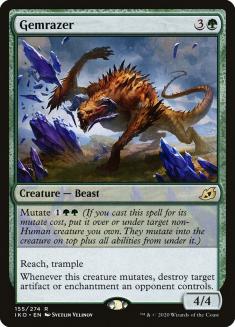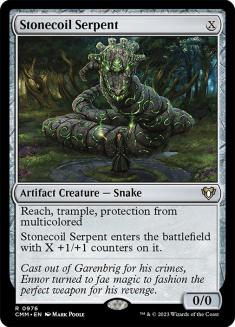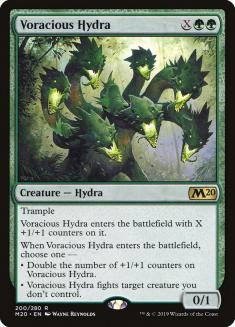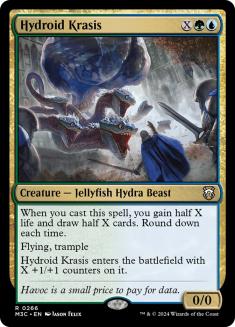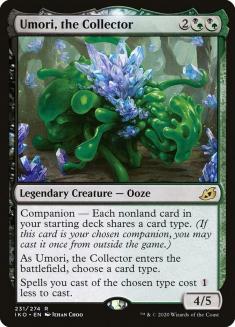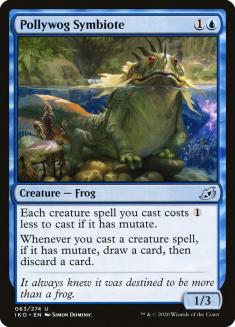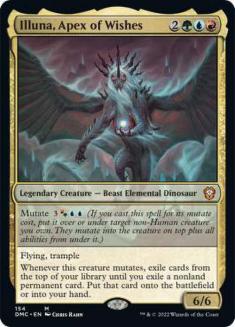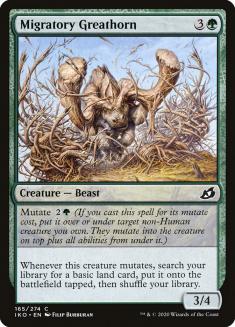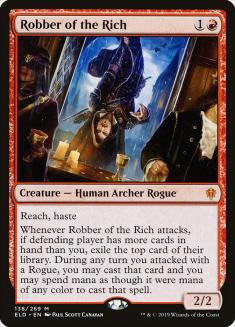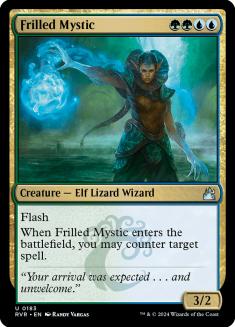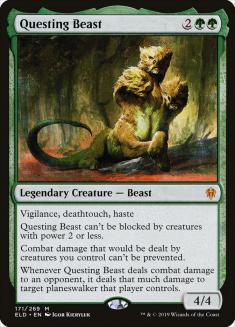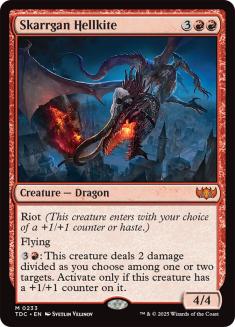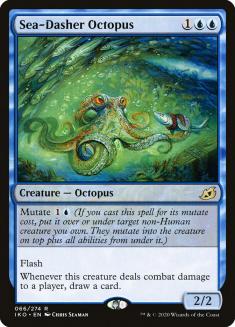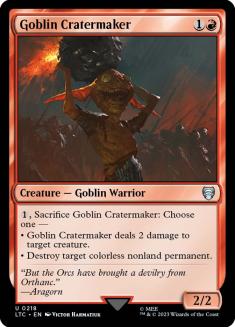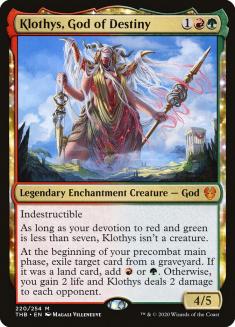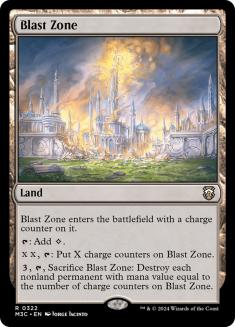After nearly a three-year stint working at Wizards of the Coast (WotC) on the Play Design team, I’m happy to be welcomed back here at StarCityGames.com to share my thought processes with you once again.
To anyone following Magic or playing Magic Arena (Arena) over the last couple of weeks, it’s not news to you the amount of hype, discussion, and even hot takes (hate ’em) regarding companions, in most cases rightfully so. Companion is an extremely novel mechanic in the scope of Magic design with many long-lasting implications on deckbuilding both in Ikoria Standard and in Eternal formats. There’s been so much to say and explore about companion that another high-profile mechanic from Ikoria, mutate, has been largely neglected in public discourse. Let’s change that.
Understanding Mutate
Most initial evaluations of mutate were comparisons to bestow, agnostic of rate. While the two mechanics are similar on the surface, there are some key differences, and the latter point of rate is crucial when actually evaluating where the rate in many of the mutate cards are.
Bestow was priced as a risk-mitigation mechanic that builds an Aura on top of creatures, and is priced to reflect that when your creature is removed you still have some cardboard left over.
Compare these two:
The mutation cost of Gemrazer is far cheaper than the bestow cost of Boon Satyr. Further, Gemrazer (and many other mutate creatures) have mutate enters-the-battlefield triggers that generate a card, mitigating some of the risk that the entire mutate stack can die in combat or be removed with a kill card. In more uncommon circumstances, these stacks can get quite large and generate an incredible amount of value per mutation.
What are the implications here? Mutate is inherently an aggressively slanted mechanic.
Abusing Mutate
Bestow is pretty straightforward — I attach an Aura to my creature and get some bonus stats.
Mutate is less so. Choosing which creature to become the “face card” influences a variety of factors that matter — color, mana cost, and most importantly power/toughness. Typically, the mutate creature cast will become the face card, which means in many circumstances you’re not gaining the full additional stats of the mutation creature.
+1/+1 counters can break this dynamic. Choosing which creatures to be the primary “hosts” can matter just as much in deck building as the mutate creatures.
To name a few, the above are relatively high-profile Standard Constructed cards that can make mutate creatures into true “haste” creatures that also generate a mutation trigger. These can lead to some explosive battlefields where your opponents are under immense pressure or just dead out of nowhere.
Aside: Nissa, Who Shakes the World looks like it could be a good generator of host creatures, but in reality because of layers (I too barely understand them), you will always end up with a base 0/0 creature that has three +1/+1 counters regardless of what the face card is.
Putting It into Practice
Last weekend Standard Metagame challenges took place on Arena, and with the primary targets of Keruga Jeskai Fires, Temur Reclamation, and Lurrus varieties, I built this after a few iterations:
Creatures (35)
- 4 Paradise Druid
- 2 Arboreal Grazer
- 2 Voracious Hydra
- 2 Questing Beast
- 4 Bonecrusher Giant
- 2 Stonecoil Serpent
- 3 Brazen Borrower
- 1 Migratory Greathorn
- 4 Illuna, Apex of Wishes
- 3 Pollywog Symbiote
- 4 Gemrazer
- 4 Sea-Dasher Octopus
Lands (25)

You’ll first notice that Temur Mutate also utilizes a companion. It’s too difficult to tell this early in Ikoria’s Standard life whether Umori, the Collector is the optimal way to build this strategy, but for now I think it’s worth paying the cost of being all creatures to learn as much as possible about how hard the strategy can be pushed.
The biggest challenge when building Umori decks is to have sufficient interaction to fight other linear strategies. Adventure is one of the most powerful ways to circumvent the all-creature restriction, and with the ubiquity of artifacts and enchantments between Fires of Invention, Wilderness Reclamation, and Witch’s Oven, Gemrazer is an excellent card in most matchups for not only its trigger but its aggressive rate.
Building high-synergy decks always creates a tension between enablers and payoffs. While cards like Arboreal Grazer, Stonecoil Serpent, and Voracious Hydra are excellent for maximizing mutate, flooding on a bunch of them is a losing proposition. While Paradise Druid is an all-star in this deck for a multitude of reasons, including allowing you to curve into Umori every game and being a low-risk way to get mutate triggers, Pollywog Symbiote is a bit more innocuous.
While still having similar tensions to the aforementioned +1/+1 counter enablers, Pollywog Symbiote is also powerful flooding mitigation and in combination with Umori means that Temur Mutate is quite good at cheating on mana.
The face of Temur Mutate, Illuna gives the deck the raw power it needs to compete as top-end “haste” damage as well as a way to generate explosive battlefield states with its “cascade” ability. Notably, Illuna being able to put the revealed card into your hand instead of always onto the battlefield is a substantial power boost in this deck. Originally this was intended to mitigate the feel-bad of flipping into another copy of the legendary creature, but it has a wide variety of applications when you can draw “spells” like Bonecrusher Giant and Brazen Borrower or allow yourself to get additional mutate triggers.
It’s worth mentioning that Stonecoil Serpent is incapable of being a host for Illuna due to having protection from multicolored. While an unfortunate nombo that one should be aware of, the Serpent is still a worthy card to play due to its strength with Sea-Dasher Octopus and Gemrazer.
Sideboarding
One of the larger costs of playing with companions is your sideboard becoming weaker — whether it’s being unable to play cheap interaction with Keruga, not having access to your high-impact cards as frequently with Yorion, or just not being able to play traditional blue countermagic at all in the case of Temur Mutate and Umori. While I’ve taken some strides to mitigate this restriction, it does mean your ability to sideboard is more rigid, and you are generally bringing in simple packages of cards depending on what macro archetypes you’re playing against.
It is possible that the optimal way to build the deck is to plan to sideboard out Umori against certain types of decks (most likely control), and have more fluid plans involving counterspells. This is one of the ways I intend to experiment with iterating on the strategy, but for now:
VS Fires of Invention / Wilderness Reclamation / Control Leanings
Out:
In:
For all of my talk about looking into different sideboard configurations with counterspells, Temur Mutate in this form does have a nifty sideboard plan. Frilled Mystic is extremely punishing when opponents don’t expect it, and between Sea-Dasher Octopus and Brazen Borrower, you can play a viable Flash game. Coupled with haste creatures headlined by the now-normal Robber of the Rich / Brazen Borrower tag-team of Rogues, you can put opponents into dangerous squeezes where they’re forced to play into countermagic and face dangerous amounts of burst damage.
Against Fires of Invention and Wilderness Reclamation in particular, connecting with Gemrazer and/or leaving up Brazen Borrower to answer their namesake enchantments is paramount. If these decks can’t get ahead of you on mana, then you tend to be a huge favorite as they often have difficulty answering large creatures. The balancing act between aggression and playing around sweepers like Deafening Clarion and Storm’s Wrath in their respective matchups is a natural tension to be aware of. Thankfully, Umori is a reliable and excellent play against both.
VS Lurrus of the Dream-Den / Cat-Oven / Most Aggressive Decks
Out:
In:
In particular against Lurrus decks, the games typically progress in two phases — managing the battlefield long enough to “draw out” Lurrus, and then answering Lurrus and closing the game.
You’ll notice that all of these cards are excellent at doing that and I’m especially proud of my Blast Zone find for being so well-suited for fighting Cat-Oven. I suspect that decks even without a spell restriction should look to incorporate some Blast Zones in their sideboards if they’re in need of percentage points against these types of decks.
Bonecrusher Giant is another premium card in these matchups, as an uncontested Priest of Forgotten Gods over just a couple of turns is an easy way to lose.
Skarrgan Hellkite is traditionally difficult for these decks to answer, and giving it a +1/+1 counter (which you will typically do) means that Lurrus can never generate a long-term advantage against you.
Otherwise, these matchups are about mitigating the amount of chip damage your opponent can do to you and turning the game around quickly over a few turn cycles after their engines are offline.
Other Mutate Explorations
While I’ve put less effort into iterating on these decks, there’s plenty of worthy exploration to be done into fleshing out mutate packages in other strategies. Naturally, after landing on psuedo-flash sideboard plan for Temur, it’s worth taking a few looks at what a dedicated version of that deck could look like:
Creatures (26)
- 2 Hydroid Krasis
- 4 Frilled Mystic
- 2 Spectral Sailor
- 4 Brineborn Cutthroat
- 2 Stonecoil Serpent
- 4 Brazen Borrower
- 4 Pouncing Shoreshark
- 4 Sea-Dasher Octopus
Lands (25)
Spells (9)

There are many different details to consider here, and honestly it’s not too difficult to justify this deck being mono-blue, but Growth Spiral is still one of the strongest cards in Ikoria Standard even without many cards to ramp into due to Brineborn Cutthroat. Similarly, Frilled Mystic is one of the strongest possible cards to have while ahead on the battlefield.
As for staying on the battlefield, is Pouncing Shoreshark the ticket? It’s hard to say, but I wouldn’t write it off. If you wanted to eschew a countermagic-heavy version, it might be possible to play a more aggressive tempo version of flash with Pollywog Symbiote to complement the Shark alongside additional mutate creatures.
Finally, here’s a midrange version of mutate leaning into some of the black options:
Creatures (32)
- 2 Hydroid Krasis
- 4 Paradise Druid
- 4 Arboreal Grazer
- 4 Cavalier of Thorns
- 1 Polukranos, Unchained
- 2 Uro, Titan of Nature's Wrath
- 4 Pollywog Symbiote
- 2 Brokkos, Apex of Forever
- 3 Dirge Bat
- 4 Gemrazer
- 2 Nethroi, Apex of Death
Lands (28)

Cavalier of Thorns is doing a lot of work in this deck, giving you a self-mill angle with Uro, Titan of Nature’s Wrath; Nethroi, Apex of Death; and Brokkos, Apex of Forever. This deck is also extremely mana-hungry, using Polukranos, Unchained alongside all the aforementioned creatures to have a variety of inevitability engines.
Brokkos, in particular, is worthy of exploring alongside Cavalier of Thorns and Uro. Many Sultai-based decks already have small self-mill packages, and the synergy between Pollywog Symbiote and Brokkos is clear, giving the deck a potentially huge stream of threats. The ability to super-charge a Hydroid Krasis to easily kill in two turns should not be underestimated.
While the white splash doesn’t seem entirely necessary, I’ve always had an eye on Knight of Autumn and Tolsimir, Friend to Wolves as excellent potential cards for mutate decks, and having an excuse to incorporate them is welcome.
Ikoria has a multitude of beneath-the-surface angles that reward creative deckbuilding and exploration. Mutate is one of them and worthy of your time.

